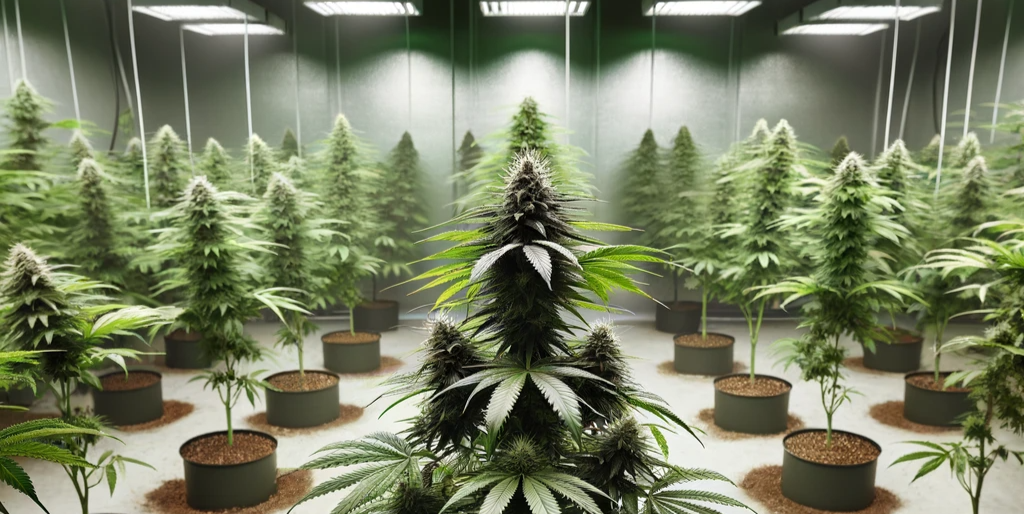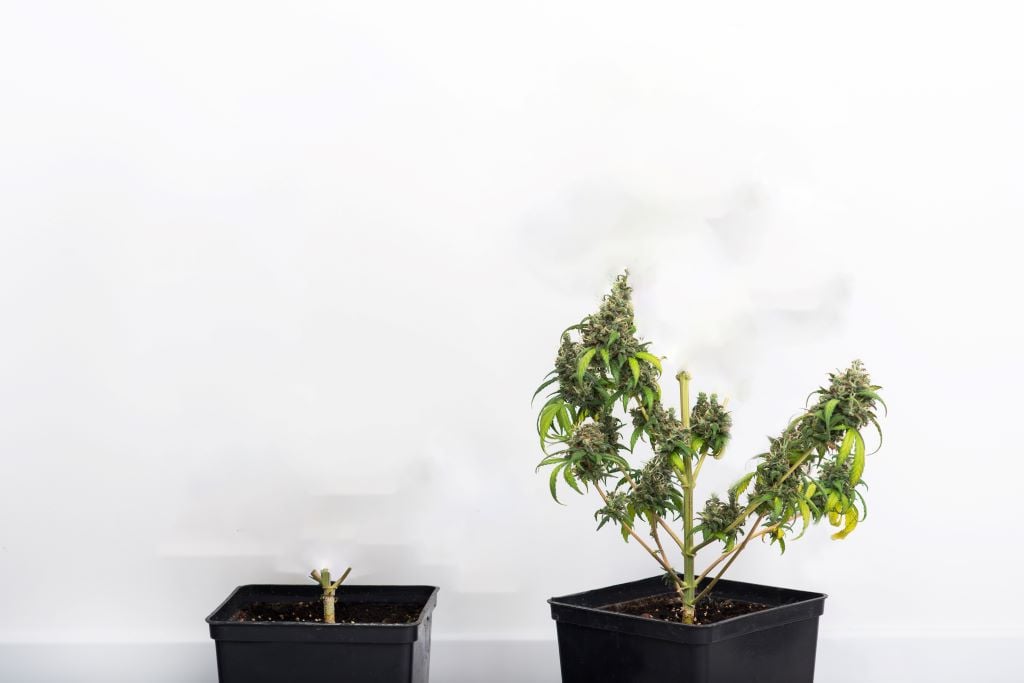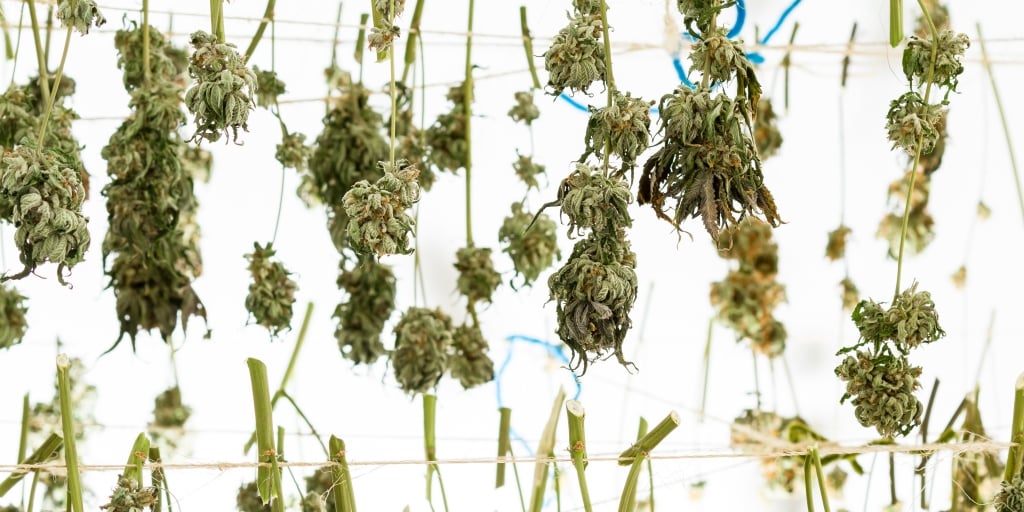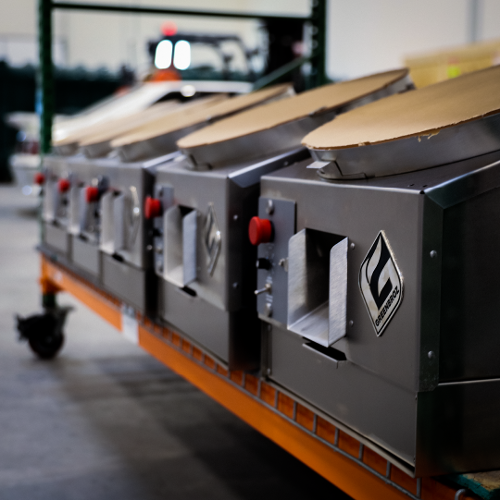The Ultimate Guide to Cannabis Equipment Maintenance
In the world of cannabis cultivation, your equipment is your best friend. Keeping it in pristine condition isn't just about prolonging its lifespan;...

Harvesting cannabis is the most important aspect of cannabis cultivation. It's the first step in the post growing process for marijuana growers just before trimming then curing your weed and finally storing your buds. Harvesting your plants correctly is crucial to maximize potency and preservation of valuable trichomes. Once you decide it's time to harvest using a trichome development chart or other methods, follow below for the ends and outs of proper weed harvesting techniques.
Harvest your cannabis by snipping your mature female plants at the base, at the right time. Easier said than done right? Marijuana harvesting is a time consuming and delicate process that is the culmination of months of growing. Believe it or not, the easy part of marijuana harvesting is the harvesting itself, the tricky part is timing your harvest.
Knowing when to harvest is as important as knowing how to harvest. We cover the tricks and tips of timing your cannabis harvesting here. A few key takeaways
There are of course more scientific ways of timing your cannabis harvest, like using CBG levels. However, a Jewelers loop and patience has been providing bountiful harvest of thick flavorful buds for decades.
Harvesting cannabis effectively comes down to proper preparation. Make sure you already have a room ready to store and dry your plants or if you're wet. Prepare for harvesting with the right tools:
Before you harvest make sure you have a plan for after you snip your plants because you can't un-cut your marijuana. Decide if you are wet or dry trimming your cannabis buds as this will dictate what you do right after pruning your plants. Both wet and dry trimming play crucial roles in the marijuana harvesting process, each with its unique advantages.
This is done immediately after harvesting to usually save money and time, it involves cutting leaves while the plant is still fresh. This method allows for quick shaping of each bud, as the leaves are more extended and easier to see. However, it requires a controlled drying environment to prevent mold, since the moisture in the freshly cut buds can lead to mold growth.
The plant is first hung to dry and then trimmed, is favored for its ability to enhance the flavor. This slower drying process helps in developing a richer aroma and taste. Although it demands more space and can be messier, dry trimming is often chosen for preserving the bud's potency and overall quality.
Flushing your marijuana plants is a crucial step before harvesting for non-organic soils. This process involves ceasing all fertilizers and nutrients about two weeks before you plan to harvest, and watering your plants solely with plain water. Flushing removes excess nutrients and salts from the soil and plant, which can significantly improve the taste and smoothness of your final product. It ensures that the natural flavors and aromas of the marijuana are not overshadowed by a chemical taste, providing a purer and higher quality experience.
 |
| a harvested cannabis plant next to a halfway harvested plant |
Now that you have decided and prepped all of your post-harvest process it's time to harvest. Set out all your tools, put on your gloves and prep your drying area.
Harvest cannabis plants early in the morning or before your grow lights turn on. This timing ensures the plant is at its peak in terms of natural cycle and resin production. This is because at night or lights off the marijuana plant is focused on THC development rather than photosynthesis.
When harvesting your weed plants you can either section your harvest out or chop the whole plant. As shown above, the whole plant method and the sectional harvest method.
Many growers opt to chop down the entire cannabis plant at once. This method is straightforward and is particularly common with autoflower plants.
For larger plants, consider harvesting in sections. This approach allows the buds on the upper branches, which typically mature faster, to be harvested first. This exposes the lower flowers to more light and time, allowing them to develop further. By removing only the top part initially, the lower buds get an extra week or so to fatten up, enhancing their quality and yield.
When it's time to harvest the lower portion, use a small hand saw to cut the stalk at the soil level or just below.
Following a no-till and recycled organic living soil practice, leave the root ball in the grow bag. The decomposing roots will feed the worms and enrich the soil over the months, preparing it for the next growing season.
Harvesting in sections helps to spread out the drying and trimming efforts. This is particularly beneficial when handling multiple large plants, making the process more manageable.
Washing helps remove any unwanted residues, such as dust, dirt, or even small insects, that might have settled on the buds during the growing process. It's particularly beneficial if your plants were exposed to outdoor elements or treated with pesticide sprays. Outdoor growers usually do this to ensure they have a clean product for smoking free from bugs and grime.

After the careful process of harvesting your cannabis, drying is the next crucial step. Proper drying is key to preserving the potency, flavor, and aroma of your buds. Here's how to do it right:
Setting Up Your Drying Space: Choose a cool, dark, and well-ventilated room for drying. The ideal temperature is around 60-70°F (15-21°C), with a humidity level of 45-55%. Avoid areas with high humidity to prevent mold.
Preparing the Buds for Drying: If you haven't already, trim your cannabis. You can either trim your buds before drying (wet trimming) or after (dry trimming). Wet trimming speeds up the drying process, while dry trimming helps preserve terpenes and cannabinoids.
Hanging the Buds: Hang your trimmed buds upside down on drying racks or strings. Ensure they are spaced out to allow for adequate air circulation around each bud. Avoid overcrowding, as this can lead to uneven drying and potential mold growth.
Monitoring the Environment: Use a hygrometer to monitor the humidity and temperature of your drying space. Consistent conditions are vital for even drying. If the room is too dry, a humidifier can help; if too humid, a dehumidifier or increased ventilation may be necessary.
Patience is Key: Drying typically takes about 7-14 days. Rushing this process can degrade your cannabis quality. The buds are ready when the stems snap rather than bend, and the outside of the buds feels dry to the touch.
Avoiding Light and Excess Heat: Keep your drying room dark as light can degrade THC. Also, avoid using heaters or fans that blow directly on the buds, as this can cause uneven drying and loss of terpenes.
Checking for Mold: Regularly inspect your buds for any signs of mold or mildew. If you find any, remove the affected buds immediately to prevent it from spreading.
By following these steps, you ensure that your cannabis dries evenly and maintains its quality. Properly dried cannabis provides a smoother, more pleasant smoking experience and preserves the buds' potency and flavor profile.
Curing is not just a step in the process; it's an art that can greatly enhance your marijuana's potency and flavor. After drying, place your buds in airtight containers and store them in a cool, dark place. For the first week, open the containers several times a day to let out any excess moisture and allow fresh air in. This process, known as burping, is crucial to prevent mold and to properly cure the buds. Curing results in a smoother and more enjoyable product.
Proper storage in a dark, cool environment in airtight containers is essential to preserve the quality and longevity of your marijuana. THC potency degrades over time and with the proper storage techniques you can minimize this.
Once you cut your plants there's no going back. It's crucial to be prepared with the essential tools and process before you start shearing. Setup your curing area and have a storage plan in place. Make sure you know if you're wet or dry trimming and always remember to take your time. Cannabis is a challenging crop, remember that mistakes happen, that's what keeps growers coming back season after season.
Never miss a blog posting or exclusive shop deal!

In the world of cannabis cultivation, your equipment is your best friend. Keeping it in pristine condition isn't just about prolonging its lifespan;...

In Humboldt County's green expanses, Jonah Carrington is changing the cannabis game with the GreenBroz Model G Precision Grinder. From his Santa...

Cannabis has come a long way, from black market only to decriminalization, and being legalized in one form or another is just about every state. The...